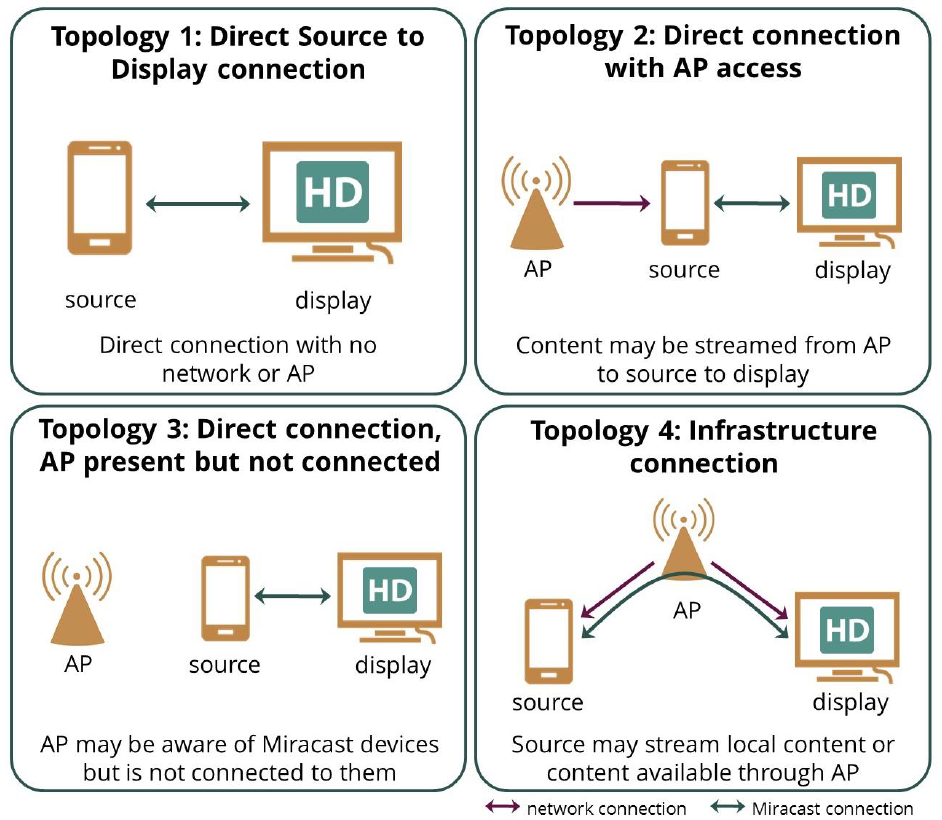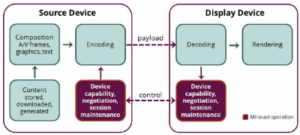Back in 2012, a technology that was being used by makers of Android to compete with AirPlay from Apple and WiDi from Intel and called Miracast, was taken into the Wi-Fi Alliance and now the technology is being updated.

The Wi-Fi Alliance has released R2 of the Miracast specification to catch up with the latest video technologies and to make the most of the more recent developments in Wi-Fi. We spoke to Cam Witt of the Alliance, who looks after the technology and he helped us understand the changes. But first, some background…
Wi-Fi was not originally intended for video or display applications, but the technology developed in speed while the world has been going to wireless. Apple developed its proprietary technology under the Airplay brand and Intel responded by developing WiDi (Wireless Display) but this was also proprietary and only ran on Intel processors with Windows. That left the makers of Android and other devices out in the cold, so a group of companies including TI, Marvell and Qualcomm, joined quite early by Nvidia, developed Miracast to use Wi-Fi Direct. The Wi-fi Direct technology was critical as it allowed sources and display devices to talk directly to each other, without needing a Wi-Fi access point. It was, effectively, a peer to peer connection (P2P).

Pretty quickly, Intel helped Miracast by ensuring that WiDi devices also supported the standard and the Alliance started to certify devices for compatibility. Since September 2012, when we reported the approval of products from Broadcom, Intel, Marvell, MediaTek, Realtek, Samsung and Sony, the Alliance has certified over 7,000 devices – no mean achievement! It is also integrated into Windows, although the technology is not identified as Miracast. It’s just wireless display.
Wireless display is always a question of trade-offs, especially trying to squeeze display bandwidths into technology that was designed for data rather than time sensitive content, as video is. The trade-offs are around the complexity and speed of the compression and decompression of the content, the quality of the image and the bandwidth used. Better codecs often need very heavy calculations to compress the video or add a lot of latency.
Miracast typically has quite a lot of latency – in the range of multiple 10s of milliseconds to 100 milliseconds or more, at best (the specification mandates a maximum of 250 ms at the highest specified resolution and frame rate). That makes the technology less useful for gaming or VR, which need lower latency, but OK for less sensitive interactive applications. However, in streaming applications, the latency is not an issue.
R2 Exploits New Technologies.
Of course, time goes on and so R2 has been developed. First, there have been the incremental changes which include the support of resolutions up to 3840 x 2160p60 and even 4096 x 2160, although the highest resolution support is optional. 1280 x 720 is the minimum mandatory resolution support.
Video technology has also moved on and as well as the mandatory H.264 support, there is optional support for HEVC support at up to Main 444 10. A range of audio codecs are also supported. The support of 10 bit codecs will mean that HDR or WCG should be supportable, although support would need checking with device makers.
R2 also allows the use of the 802.11ac Wi-Fi specifcation as well as the earlier 2.5GHz bands with the ‘n’ certification. That helps to support high bit rates as even two antenna 802.11ac devices should be able to support up to 800Mbps – which is plenty for good consumer video. The original Miracast specification only supported the 2.5GHz bands.
However, the big change is in the connection topology. Miracast still supports direct connection as it did before, but now it can also support content that is streamed via an access point. That is likely to open up a range of new use cases, especially in collaboration and meeting room applications.
 Miracast R2 supports new topologies
Miracast R2 supports new topologies
In particular, the new topology allows the encoding of the video to be done in the access point (or elsewhere in the network) with just the control of the display being performed by the mobile device. That will save a lot of power and means that home gateways or STBs, with their sophisticated video hardware can be exploited, rather than relying on the mobile device to do the ‘heavy lifting’ in the video processing. It also seems to me that it might allow the development of some sophisticated remote controls.
One of the questions I had to Witt was about WiGig – a 60GHz wireless display specification that is now part of the Wi-Fi Alliance technology offering. Miracast remains distinct and separate from WiGig, which is attracting a lot of attention for VR because of its support for high resolutions with low latency.
The new version of Miracast will start to be available around the end of the year in consumer devices, which will be fully compatible with existing Miracast Certified devices. We’ll be looking out for some demos of wireless UltraHD at CES in January. – Bob Raikes

